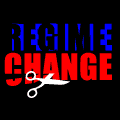 Fable is one of this year’s most anticipated games — and with good reason. The creative team behind it has been responsible for a string of innovative games (e.g., Black and White, Dungeon Keeper) and this time they’ve set themselves a massive challenge. Fable, which will be released shortly, aims to re-imagine the adventure game so that it doesn’t center on hoop-jumping — it aims to situate a traditional hero’s journey within a simulated world. While some early reviews bemoan the fact that elements of Fable had to be scaled back, it’s clear that the game is still remarkably ambitious. As the player’s character ages, and as the world changes around him (“him” because plans for female heros were among those cut), he can choose at almost any time to explore and adventure in the world, pick up the plot of the hero’s journey, or try to use the actions available in the simulated world to route around what would be the next necessary step in a hoop-jumping adventure game. And, what’s more, this world isn’t just a graphical world. It’s also a linguistic one. It’s one in which the work of writers — James Leach chief among them — is central.
Fable is one of this year’s most anticipated games — and with good reason. The creative team behind it has been responsible for a string of innovative games (e.g., Black and White, Dungeon Keeper) and this time they’ve set themselves a massive challenge. Fable, which will be released shortly, aims to re-imagine the adventure game so that it doesn’t center on hoop-jumping — it aims to situate a traditional hero’s journey within a simulated world. While some early reviews bemoan the fact that elements of Fable had to be scaled back, it’s clear that the game is still remarkably ambitious. As the player’s character ages, and as the world changes around him (“him” because plans for female heros were among those cut), he can choose at almost any time to explore and adventure in the world, pick up the plot of the hero’s journey, or try to use the actions available in the simulated world to route around what would be the next necessary step in a hoop-jumping adventure game. And, what’s more, this world isn’t just a graphical world. It’s also a linguistic one. It’s one in which the work of writers — James Leach chief among them — is central.
You can read quite a bit online about the work of Peter Molyneux and Fable‘s game design (e.g., in The New York Times). You can read quite a bit about the work of the AI team and the simulated world and characters (e.g., early reviews from places like IGN). I will concentrate, in these posts, on the writing of Fable.
This is a preview of
Writing Fable, part one
.
Read the full post.


